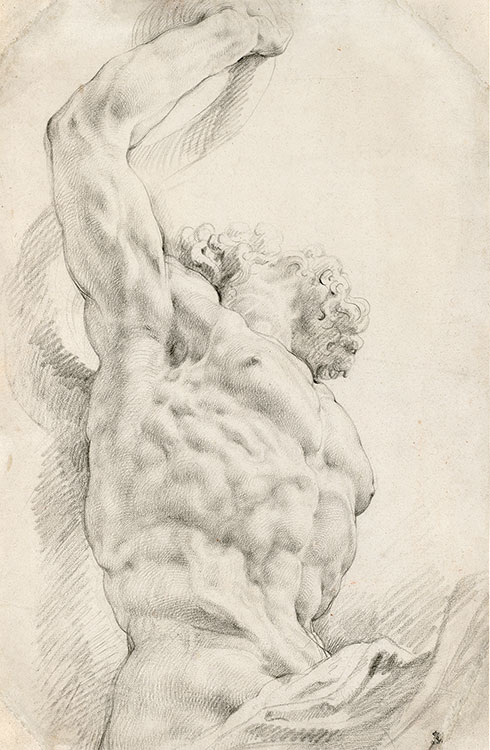
During his two visits to Rome, Rubens studied the Laocoön (shown below) more intently than any other ancient statue. The chilling depiction of the anguished Trojan priest, struggling to release himself from the tight coils of the snakes that threaten to suffocate him and his two children, provided the artist with an opportunity to observe a male body engaged in an intense physical struggle. Rubens created a dense, pulsating network of lines, methodically capturing the tense muscles and protruding veins of Laocoön’s torso and right arm in black chalk. The sculpture is observed from below and sideways, exemplifying the artist’s interest in finding unusual and dynamic viewpoints when drawing ancient sculpture.
Peter Paul Rubens
Flemish, 1577–1640
Torso of Laocoön, ca. 1601–2
Black chalk
Kupferstich-Kabinett, Staatliche Kunstsammlungen Dresden, INV. NO. C 1874-22A
© Kupferstich-Kabinett, Staatliche Kunstsammlungen Dresden
Photo: Herbert Boswank
